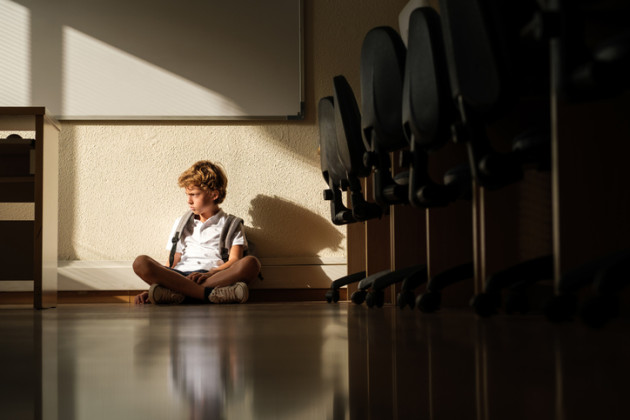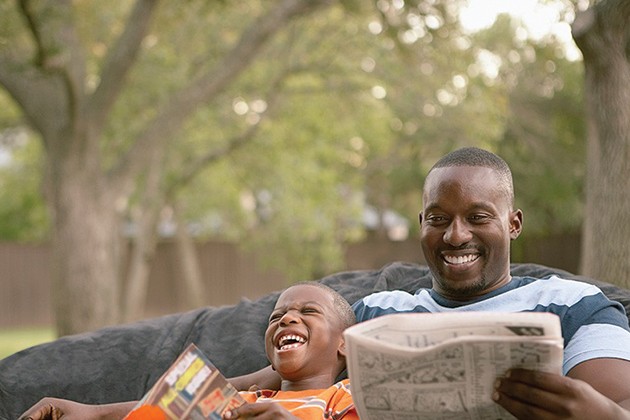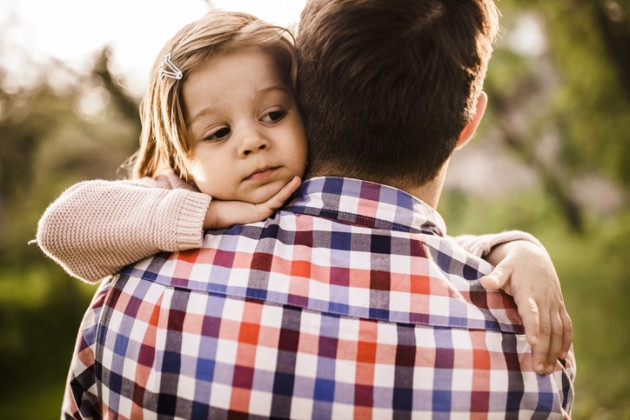Expert Advice on How Parents Can Deal with School Avoidance

Few parents have heard the term “school refusal,” but many families are experiencing it. In fact, since the pandemic, it’s a big problem. Missing a lot of school causes cognitive–academic, social and behavioral deficits for students. School Avoidance Alliance founder Jayne Demsky joins Christine French Cully, Highlights Editor-in-Chief, and Hillary Bates, Director of Purpose and Impact, on the podcast to help us understand what’s happening and how parents and schools can help.
Highlights has received many letters from kids who don’t want to go to school for various reasons. Christine shares a few:
Brent from Iowa writes, “Sometimes I get scared when I go to school. I’m afraid I might get in trouble, though I have my work done. What can I do to not be scared?”
A reader from San Antonio, TX, heartbreakingly confides that she no longer feels safe at school after the Uvalde shooting.
A second grader from Modesto writes, “…my new teacher is very strict. She’s so strict, I never want to go to school anymore. What can I do?”
There are many reasons children don’t want to go to school. Some might not even be able to articulate the reasons they feel this way. However, this has recently become a larger issue.
Hillary points out that “school avoidance” might be a term parents aren’t acquainted with, “but it’s being experienced in millions of homes across the United States.” Hillary shares this is a personal topic for her because she’s been having conversations with her daughter about school avoidance for years now. She notes that in the beginning, she didn’t know they were dealing with school refusal, but as her daughter got older, she was able to articulate how sometimes she feels like she can’t go to school.
Jayne joins the conversation, and Christine points out that this is also a personal conversation for Jayne because her son struggled with school avoidance as well.
Prior to recording this episode, Jayne and Hillary discussed their own experiences. Hillary says she realized that many times people hear this topic and think, “Kids these days think they’re in charge! The parents need to be in charge!” She asks Jayne to share some of the history of what we know about school refusal and about whether it’s a new phenomenon.
There are studies from as far back as the 1930s, showing evidence of school avoidance, Jayne says. When she was dealing with her son’s school avoidance about 10 years ago, there wasn’t much in the news or in research on the topic. However, it’s an issue that’s always existed. Now in this post-COVID school environment, the issue has been brought to the forefront like never before.
During COVID when schools were closed and kids were staying home, Jayne explains, they had a chance to question why they needed to do homework or why they needed to be in the classroom. They may have realized they had anxiety around school and felt better at home.
Sometimes I get scared when I go to school. I’m afraid I might get in trouble, though I have my work done. What can I do to not be scared?
Christine asks how school refusal is different from truancy.
This is an important distinction. Jayne explains truancy is when the family doesn’t know their child is absent from school. A child hides the absences and is usually doing it for “tangible rewards,” like hanging out with a friend. With school avoidance, however, parents know where the child is. The child might be crying or hiding in their bedroom, Jayne says, trying to avoid going to school.
It's common for kids to wake up and not want to go to school, but Hillary asks how parents can tell the difference between the normal feeling of occasionally wanting to stay home and something more serious.
Jayne agrees that kids will have days when they don’t want to go to school, but it’s important for parents to watch for patterns and listen to their gut to recognize when it’s more than that. A child might not want to go to school because they’re having a bad week, but then the issue gets resolved and they’re back to school like normal. However, if the avoidance behavior (e.g., crying on school mornings, hiding in their room, verbally expressing a fear of school) lasts 2 weeks or more, it’s time to intervene and reach out to your child’s school.
Hillary appreciates Jayne’s advice and shares the difficulty she experienced while trying to understand her daughter’s school avoidance. Her daughter has chronic migraine disease, and Hillary says, “…for years it was hard for us to disambiguate the days when she had real migraines from the days when she was expressing emotional pain as head pain.” Hillary stresses that sometimes there’s a period of ambiguity, even with parents who’re really tuned into their children.
Some school districts encourage parents to let their children take days off for mental health, Christine shares. However, the treatment for anxiety around school is about countering school avoidance. Christine asks what Jayne thinks about the recommendations for taking mental health days.
Jaynes has spoken to many experts on school avoidance, and they say taking days off is probably the worst treatment. She notes, though, sometimes kids do need mental health days. She implores experts to refine and revisit their position to help parents recognize the difference between needing one day off and a pattern of avoidance.
They all agree it’s a complicated issue.
When a family is struggling with school avoidance, Hillary notes, “You really need people to be willing to share how hard it is with you.” This could mean a school receiving a child who’s crying or recognizing that a child isn’t organized enough to be in the classroom at that moment. It’s not helpful to hear from a school, she says, “Go home and get yourself together.” It would be immensely helpful to hear something like, “I’m going to sit next to you until this feels more comfortable.”
Jayne applauds Hillary’s observations and asks if she’s experienced that kind of support with her daughter. Hillary shares they’ve moved their daughter to a private school, where she can receive this support. She also explains that this isn’t a criticism of their previous school experiences and recognizes that not everyone can easily change school environments. The heart of the issue, Hillary says, is while schools grapple with staffing and funding issues, they may “have the heart to offer that support to a child, [but] they literally don’t have the bodies.”
Hillary asks Jayne about what common mental health issues underlie school avoidance.
Jayne lists several contributing factors:
- various anxiety disorders—general anxiety, social anxiety, separation anxiety
- depression
- trauma
There are other reasons as well that could be co-occurring with those listed above, such as
- absence due to illness (i.e., a child is out of the school routine and may feel overwhelmed by going back and catching up on work)
- moving from school to school
- bullying that isn’t handled correctly
- perfectionism
- ADHD
Christine shares data that show 2-5% of children are refusing school on a regular basis because of anxiety or depression. She asks if these data tell us something overall about school environments.
Jayne says yes, and shares that her discussions with school psychologists, clinicians and parents, reveal that there isn’t a good school-life balance for kids. Between the pressures of completing hours of homework, participating in clubs and sports, taking advanced and AP classes and focusing on getting into the “right” colleges, kids can easily be overwhelmed by school. This is an issue that impacts kids at all grade levels.
Schooling needs to be reevaluated, Jayne stresses, and some educators are asking questions like, “What is the purpose of education—is it academics or is it the whole child?”
Something that’s important at Highlights, Hillary shares, is play. “Play is the crucial work of childhood…it’s preventative medicine for so many things that kids come across,” she says. Teachers recognize and advocate for it as well, but Hillary notes, sometimes schools push out this critical free-play time that’s imperative for kids to regulate, have downtime and enjoy physical activity. This is important for older kids as well, whose play doesn’t look the same as their younger peers.
Hillary asks whether there are certain demographics of children who’re more prone to school avoidance issues.
Research doesn’t show differences across various demographics (i.e., socioeconomic, gender, race, ethnicity); however, Jayne notes that a lot of the research is done in disadvantaged areas. Therefore, the narrative seems disproportionate, but there’s really no difference.
Hillary, notes however, there are families who’re able to provide certain resources that other families cannot. Jayne agrees and adds the disparity in mental health resources is apparent as well.
Christine asks what parents can do at home to support kids who are refusing to go to school.
Clinicians advise not being too accommodating, which is hard to hear as a parent. For example, kids might be extremely shy in public or have aversions to certain foods, and Jayne explains, it is important to slowly help a child overcome the fears and aversions so they feel agency in their environment. Modeling good behavior and remaining level-headed, Jayne adds, is also critical.
Hillary shares she had moments with her daughter when she’s lost her cool. She says she feels terrible and realizes that although yelling or being overly stern “might help in the moment, it doesn’t solve the problem.” Mental health is in our brain and physical health is in our body, Hillary explains, but anxiety is in our body. Thinking of this distinction can help parents understand the anxiety issues related to school avoidance and allow them to have more empathy for their child in these moments.
It was a huge relief, Hillary says, when her daughter could finally express how anxiety felt for her. At 11 years old, her daughter shared it felt like her throat was closing up and her body was shaking. Hearing this, Hillary says she was able to dispatch any anger she was feeling and replace it with empathy.
A huge part of figuring out school avoidance issues is kids having the words to express how it feels. This can be difficult, especially for young kids. For example, Hillary notes that her daughter started having issue around second grade, so it was several years before she could articulate her anxiety about school.
Parents’ behavior can play into kids’ behaviors, too, Hillary notes, but it does not mean that these behaviors are your fault. It is freeing to realize this, she notes, and it can embolden you to do better things to support your child, without feeling like you were doing the wrong thing intentionally before.
Hillary asks what a school system can do to help a child who is anxious or resistant to going to school.
Jayne says schools should put resources toward professional development and training on school avoidance severe anxiety disorder. It’s also important to inform parents about something called a child study team. This is a team of educators, school psychologists and counselors who work together on everything from learning difficulties to mental health issues a child might be facing. By law, each child is entitled to a free appropriate public education under the Individuals with Disabilities Education Act. Letting parents know this resource exists (i.e., having it front and center on the school’s homepage), can encourage them to reach out to the school for help before it becomes a crisis.
Although there’s a push since COVID to bring in extra resources to help with learning loss, Hillary adds, it’s also important to have resources to address mental health and school avoidance issues.
Jayne agrees and explains how schools are starting to provide resources for mental health literacy and education for students. These programs should be expanded and offered across all grades, she says. She mentions cognitive behavioral therapy and says, “Thoughts cause feelings, behaviors and actions.” Cognitive behavioral therapy can help children realize when their thoughts are causing negative reactions to their environment and how to reframe and refocus their thoughts in a positive manner. It would be helpful for the parents to be involved in this curriculum too, she notes.
Christine asks the final question: “If we truly treasure children and see them as the world’s most important people, is there something that we as a society should focus on to make the world a better place for kids.”
Jayne responds with two important things. She says, “First, I want our legislators and government to incentivize more students in high school and college to become mental health professionals…because there aren’t enough mental health professionals in our country. Secondly, I want our government to invest more in other mental health options and treatments for anxiety disorders. Right now, our first line treatments are cognitive behavioral therapy and exposure therapy, which are great, but they don’t always do the trick. We need more options, and parents need more in-home strategies. For schools, it’s the question of do we want to create the whole person or is it only academics? Schools should be educating a whole person to become an independent and productive member of society, not just producing smart kids who get good grades. We need to start promoting, believing and nurturing this approach.”
After this discussion, Hillary shared the episode with her daughter, Jill, and brings her into the conversation. Hillary is curious about her perspective and asks, “You’re sometimes scared to go to school. And how does it feel for you when you wake up and when it’s one of those mornings when you’re really scared?”
Jill says, “Usually I feel like I’m really weighed down and can’t get up. It’s not necessarily pain, but sometimes it is. Like, I’ll have a headache or stomachache or something like that.”
Jill knows that kids have written to Highlights to say they’re scared to go to school, too. For kids like that, Hillary asks, “what kind of advice would you give them as someone who’s dealt with this and as someone who’s doing better with it, going to school more consistently now?”
“I guess sometimes,” Jill says, “if you just make yourself do it on one day, you can kind of start going again, and it’ll be less hard as you go.”
Hillary agrees and adds, “Like, every time the fear shrinks a little bit, and it’s not quite as bad.” She ends with, “I’m really proud of you, Jill, for dealing with this thing that’s so hard and for coming and talking with us.”









